Two months ago, we showed you how to raise $15,000 in 28 hours on Kickstarter.
But one question kept coming up: how do you crowdfund without Kickstarter?
Are the tactics the same? Are there any advantages to not using Kickstarter? How do you set your site up to collect funds?
I found a crowdfunding case study to answer those questions and more :)
Kit Perkins is the co-founder of Ergodriven, a company perfecting how you work with better ergonomics.
They did their own on-site crowdfund completely from scratch… and raised $100,000 in 30 days.
He's here to share some tactics to help you do the same. Take it away Kit!
9 months ago, we raised $100,000 in 30 days for Topo, an anti-fatigue mat designed specifically for standing desks.
But we didn’t do it the conventional way. Instead of going to the usual places: Kickstarter, Indiegogo, etc., we did it all on our site.
I’m here to share the crowdfunding strategy we used to blow past our goals so you can do the same thing whenever you want to launch your product. And even better, how you can do it with:
- No initial audience
- No development skills
- No press coverage
But first, some back story.
In the fall of 2013, our CTO, Ryan, switched to a standing desk. He loved the open posture but found his legs fatigued much faster than he expected.
During a weekend of cliff diving that included a lot of scurrying over irregular terrain, he realized a critical component of "fatigue" might be the unnatural flat and level ground in our cities and offices.
It took over a year of design iterations: drafting, prototyping, and putting concepts in front of prospective users, to hone in on our final solution: Topo, a mat with calculated terrain to drive healthy movement and postural variety.
But 15 months of prototyping with no revenue is enough to kill a bootstrapped startup, so we knew it was vitally important to spend that time laying a foundation for early revenue.
That meant having a solid plan from the get-go to make sure our fundraising was a success.
We tried a ton of different ways to boost our crowdfunding sales, and these five tactics provided more than 90% of the results. So no matter what you’re planning on launching, make sure you try these strategies!
Tactic 1: Maximize your email list! (Even after you build it)
In an earlier post, Cathryn and Allen talked about the importance of building an email list for Kickstarter to successfully launch their “Best Self” journal.
Crowdfunding on your site is no different.
Gathering email addresses early was far and away the single biggest “unfair advantage” we gave ourselves, and those early interested people became the launching point for our successes later on.
It’s not as simple as throwing up some List Builder email popups, though. List Builder, like any other tool, is most effective inside a system that is built to get the right results. We needed a way to give something valuable to people so that they would want to hear from us down the road when we launched.
But they had to be people who needed our solution: people with standing desks, or people who would have standing desks soon.
Be Found Where People Are Already Looking
2 AM on the street outside a bar, a cop finds a man crawling around on his hands and knees under a street lamp. He asks the man what he’s doing, and the man replies, “I dropped my keys, and I’m looking for them.” The cop asks, “are you sure you dropped them here?”
The man says, “no, I dropped them over there, but it’s easier to see under the street lamp.”
You want your business to have the man’s keys AND be under the streetlamp.
Of course, you’re going to provide something valuable (the keys), but you also need to be where people are looking (in this case, the right google search terms).
Using Content for an Early Email List
Using the Google Keyword Planner, we found that tons of people search for standing desks, making it an expensive term to compete for (remember, we weren’t making thousands of dollars a day at this point).
But “right standing desk height” and “standing desk calculator” had plenty of traffic and weak competition. In fact, the few existing standing desk calculators recommended awful ergonomics.
So we built our Standing Desk Calculator and started collecting emails. Notice that we provided something useful (the optimal standing desk dimensions for your body, and free plans to build a custom desk), so people WANT to hear from us again.
We also helped to launch QuittingSitting, a now thriving ergonomics blog. Note how many pages on that site don’t include a newsletter signup form (none). But again, they’re providing real value on the site, and additional value to subscribers (a free sit-stand conversion on-ramp plan).
Build Interest Before Your Launch
As you’re building the email list, you don’t want to just drop your first email on Campaign Launch Day. We regularly hit up our list for surveys about what they do at work and with offers to beta test prototypes for free. Their feedback also helped us build a better product (critical!).
Right before Topo’s launch, we wrote a four-post series on the Topo Blog and released one post per day to our list. That gave us a lot more real estate than a single sales page to convince people that Topo is awesome. That’s how we hit our goal before noon on day 1.
Don’t Stop Building Your List When You Launch
We knew that many people on our list wouldn't be ready to jump on a pre-sale campaign run by a company with no product history.
So right below the “Pre-Order" button, we included a "remind me when Topo is in stock" link on our campaign page. We closed the campaign with over 1,000 sales and thousands of new email addresses collected with that simple technique.
Once we delivered the first units to our backers, we sent the list of people wanting to be notified an email and said, “Topo is for real - get yours now!” The conversion rate on that first email was an astonishing 23%.
That’s hundreds of additional sales, all from a little link (on the campaign page, NOT in the checkout flow) that took you to a subscribe form.
Tactic 2: Think Beyond Kickstarter
For most products, your potential customers don’t check Kickstarter every day. So even if you make the vaunted front page of Kickstarter, you’re probably not going to get much from it.
Kickstarter deserves a ton of credit for popularizing crowdfunding and making it OK to order products from someone with a prototype. But think about it: what does Kickstarter do in return for their 5-10% fee? Web development, some legitimacy, and little else.
Even if you don’t have the skills in your organization to host your crowdfunding campaign, you can likely learn enough or hire someone to get it done for less than that (or just use our code).
PLUS you can do cool stuff, like affiliate sales, that Kickstarter doesn’t allow.
Crowdfunding with Affiliates
The overwhelming majority of commerce on the internet is powered by affiliates. Some people make $1M+ a month just linking to other people’s products in exchange for a commission on each sale referred.
But crowdfunding never worked that way until Topo.
Since we built our own self-hosted crowdfunding campaign, we were able to track sales referred through custom links. This made it easier to recruit prominent bloggers to talk about us (though you need to know your bloggers well - some may be put off by a quid pro quo offer), and it effectively outsourced our advertising to a network of professionals who send qualified traffic for a living.
Engaging Your List with Personal Incentives
Your email subscribers are more than just potential customers. They're your best advertisers too. When you launch, send your email list to the campaign page, but then encourage them to send others there as well.
Since we could track paid affiliates, we were able to track unpaid affiliates too. We created a sharing competition with an entry form and a leaderboard and offered prizes to those who drove the most traffic.
Because most of our customers aren’t elite influencers, they were driving relatively small amounts of traffic. But that made it easy for all participants to imagine winning, so we had a ton of entrants, and they were hand-targeting friends and family they knew would be interested.
This increased the effective size of our list by 2,000%, and gave us significantly more people to promote to not just during the fundraiser, but when we had product in stock as well.
Tactic 3: Outsource Your Buyer Education
Often the hardest part of making a sale is education - teaching a prospective customer that they have a problem that your product solves. But, I’m sure you’ve noticed that some people just “get it.”
That’s because they’ve been educated by someone who's already started your work for you. If you can find individuals who have built large audiences and educated them in a way that helps them understand the problem you've solved, getting those educators to share your campaign with their audiences can mean big sales.
Why? Because when they share it, they’re lending a ton of social proof to your product, making both your audience and theirs more likely to buy it.
In our case Katy Bowman, Richard Nikoley, and Dave Asprey all helped us promote the product since they understood the problem we were addressing (thanks all!), but you’ll need to find your own.
If you’re not sure how to do this kind of outreach, check out the bonus in Cathryn and Allen’s Kickstarter post for some great templates for contacting influencers.
Tactic 4: Maximize Your Mentions with Ads
Since tweets or Facebook posts are so much easier to write than blog posts or emails, most of the influencers you get on board with your project are going to be sharing on social.
The problem with social (especially tweets) is that they only last for a short time. You put in a bunch of work getting Blogger X to share your campaign, and then only 1/1000th of their audience sees their 2 pm Tweet on a Tuesday. BUMMER!
But with the magic of Facebook ads, you can fix that right up. Just run an ad to people who like Blogger X on Facebook, announcing the tweet with a link to your campaign. Boom - audience acquired.
Here’s an example. After Robb Wolf had tweeted about Topo, we ran this ad to fans of Robb Wolf on Facebook:
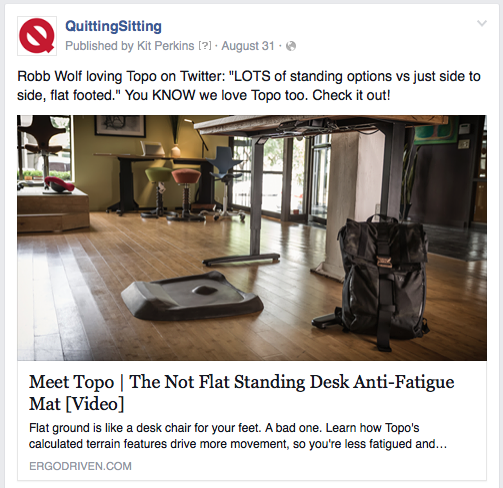
That ad generated 5x more sales than Robb’s tweet did.
[Note: If you do this, and you’ve given the blogger an affiliate link, use their affiliate link in the ad. Or generate a second affiliate link for them and pay them for those purchases, less your ad spend. Respect their audience and the work they’ve put in to build it, and be super transparent with them.]
Tactic 5: Your Crowd is My Crowd
The odds are good that someone else’s past crowdfunding campaign has a ton of backers that will back your project too.
Even better, that group of people has already shown that they’re willing to pony up for a product that doesn’t exist yet (not everyone is - our sales spiked like crazy once we delivered to first-round backers and people saw we were for real).
But how do you get a fellow crowdfunder to share your campaign? Easy! Make something they WANT to share (and send them a tweet to your “something” to let them know about it).
This post on Quitting Sitting is a perfect example. All 5 of the desk manufacturers featured in the article want to share it, and all 5 of their audiences (backers of their campaigns) are highly qualified potential customers for Topo. Win-win-win!
Just look through Kickstarter and Indiegogo for past campaigns that are similar to yours, see what content you can create about it (and the most visible place you can put that content), and then let them know when it’s published!
Note from Nat: People will frequently use this strategy on us by including Sumo in lists of tools for growing your site. If the article is high quality, we usually share it with our audiences, so it works :)
The ONE Thing All Successful Crowdfunding Campaigns Have in Common
Now that you have these techniques, it’s time to take action.
All successful crowd funders got up and did something.
You must have at least one idea you’ve thought about trying to crowdfund. The great thing about the tactics in this post? You can start working on them before you even have a prototype.
Do this right now:
- Come up with a list of influencers, blogs, and other media related to the niche you want to go after
- Identify one easy way to join the community. Could you write a guest post? Interview someone on your own site? Start your own blog? How do you start building connections to help with fundraising later?
And if you have any questions for me about the specifics, let me know in the comments!
BONUS: DIY Crowdfunding Playbook - The Easy Way (Free)
If you want to raise $100K+ in a month, we’ve outlined all the steps to recreate EXACTLY what we did in this package. You’ll find:
- Our Campaign FlowChart (from 0 to $100K in one graphic)
- The comprehensive self-hosted crowdfunding guide (22 pages!) detailing every single step
- All the code you need to pop out the pages that drove massive, qualified traffic with no media coverage
- EVERYTHING you need to go from scratch to $100K+ raised
These strategies (and all the code) are invaluable at every stage of your business - even if you’re going to use Kickstarter or IndieGoGo.


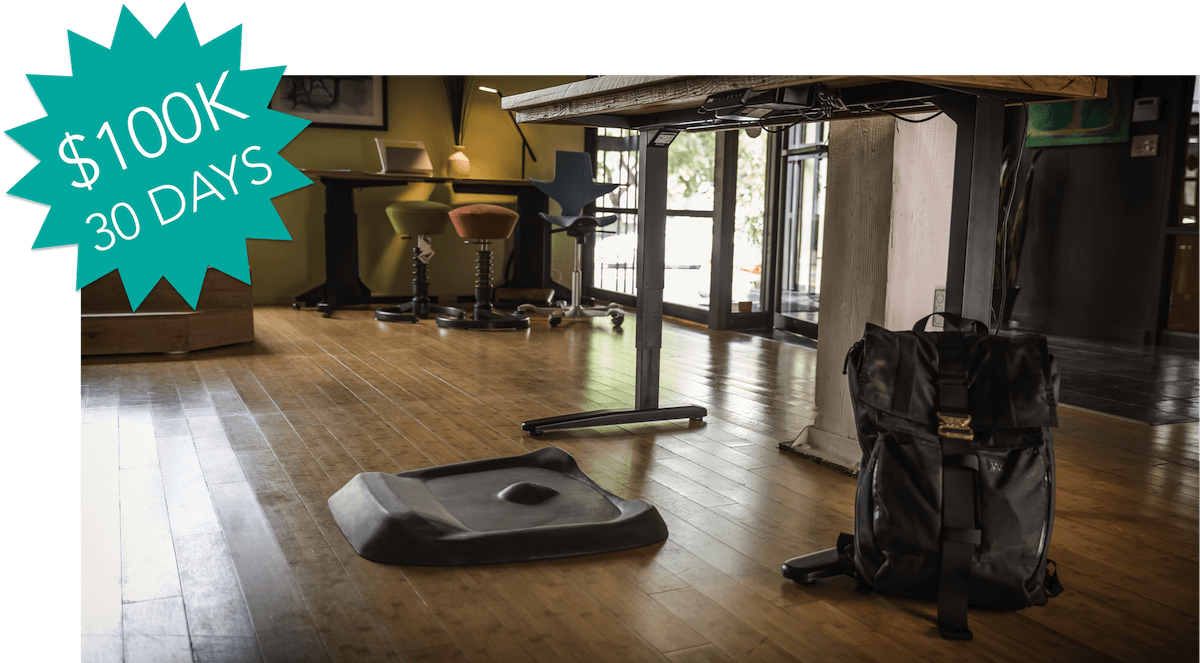
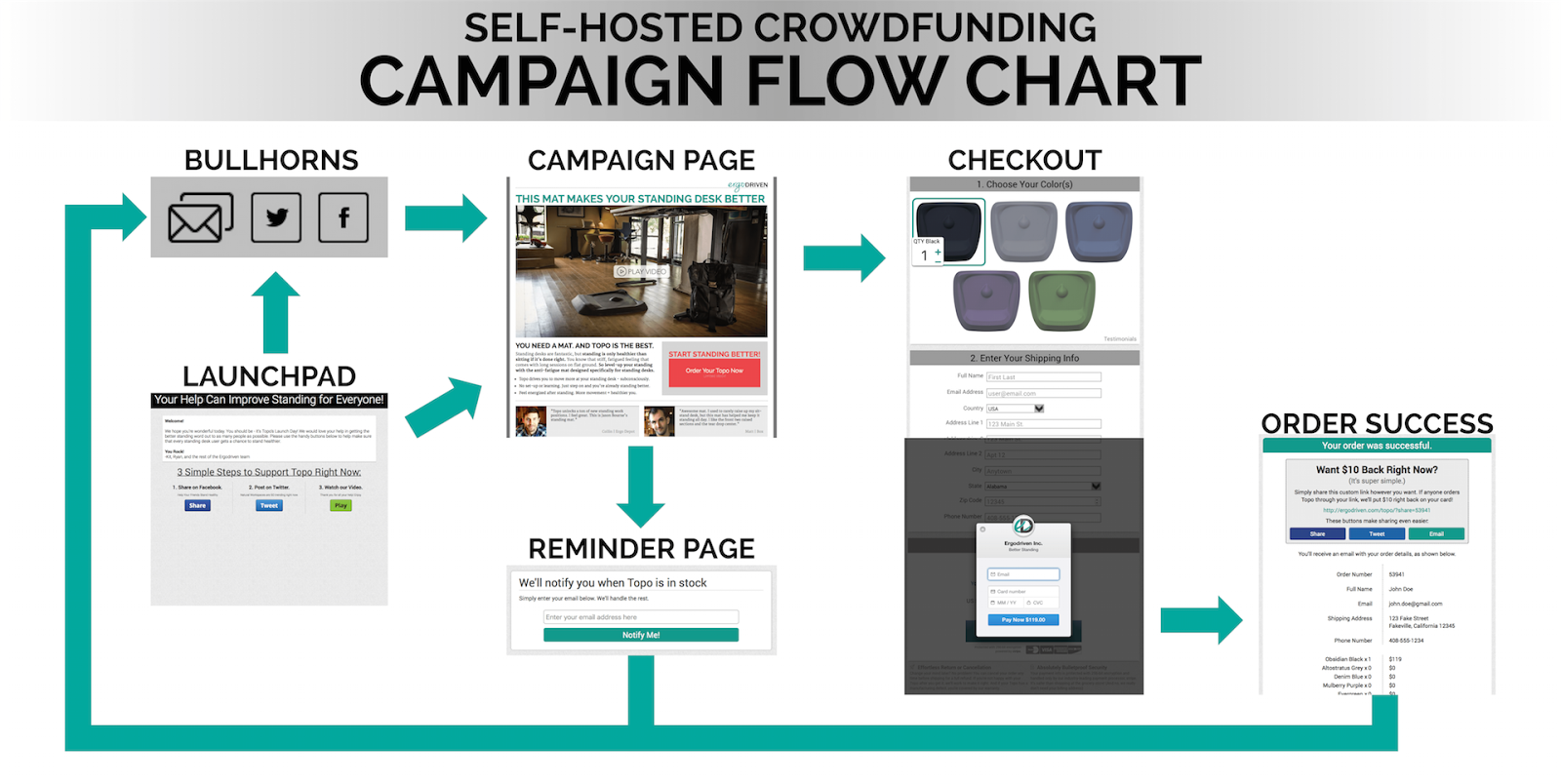

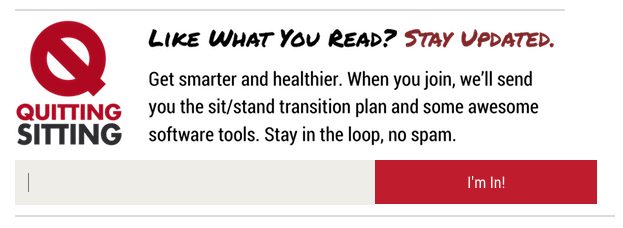

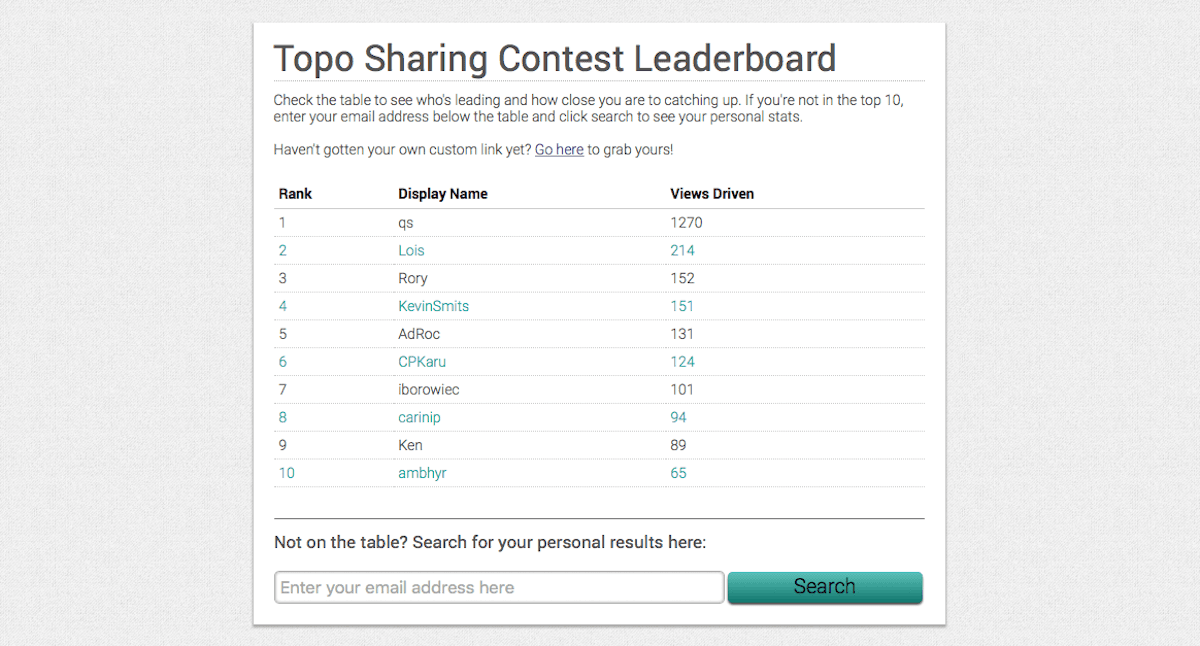

Comments